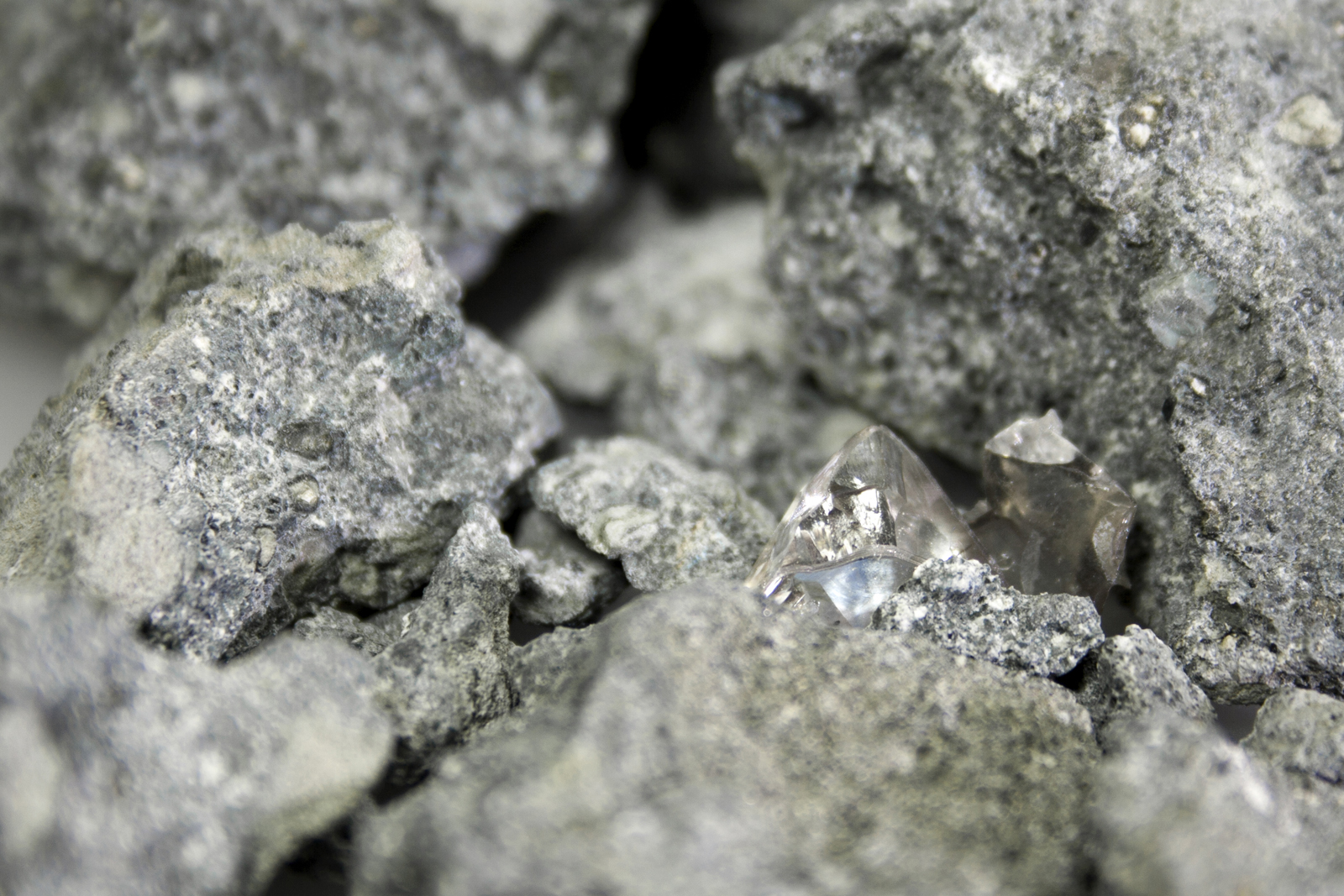Detecting diamonds with X-ray technology
X-rays penetrate objects and reveal information about its contents. Using two X-ray spectra, you can identify different materials. And now, a new algorithm is making it possible to find diamonds in the rock.

The Development Center for X-ray Technology EZRT in Fürth has developed a demonstrator that detects diamonds hiding inside rocks of volcanic origin. EZRT is a division of the Fraunhofer Institute for Integrated Circuits IIS cooperating closely with the Fraunhofer Institute for Nondestructive Testing IZFP in Saarbrücken. The department focuses on the subjects of X-ray sensor technology, computed tomography, image processing and optical 3D inspection systems as well as applications.
The process is based on dual-energy X-rays. In the process, two images of the same object are produced using two different X-ray spectra. An algorithm developed at EZRT filters out the data about the material from both images. Different substances can be identified with very high reliability. The new technology is capable of detecting diamonds of just a few millimeters in size in kimberlite ore – of grain sizes up to 50 millimeters. Together with colleagues from the Fraunhofer Institute for Optronics, System Technologies and Image Exploitation IOSB in Karlsruhe, the researchers are working on the advanced engineering of the demo model. The objective is to achieve a prototype that can inspect the ore on a fully-automated basis.
Currently, the diamond industry is already using X-rays in order to find the coveted gems. The conventional process, however, can detect the diamonds only at the surface of the ore. The diamonds irradiated and activated by X-rays emit light in the optical spectrum. “With particularly pure specimens, this technology does not work because it is precisely these that do not radiate under X-ray light,” explains physicist Jörg Mühlbauer of EZRT. In order to find the gems nonetheless, it has so far been necessary to break up the igneous rock into very small pieces. That consumes large quantities of water and energy. “Moreover, there is also the risk of damaging the larger – and therefore more valuable – diamonds,” says Mühlbauer.
Screen instead of pulverize
With the EZRT demo model, the crushed rocks pass through an X-ray machine at a speed of three meters per second. Both X-ray images produced provide data about the chemical atomic number of the materials – the number of protons in the respective nucleus. Diamond is pure carbon, a relatively light-weight element with the atomic number 6. Kimberlite typically holds a conglomerate of silicates and aluminates. Depending on the excavation area and mine, the atomic numbers vary between 12 and 14. The new algorithm uses this data. It links them with the data from both X-ray images, separates the diamonds from the kimberlite, and displays the results on two separate images.
This method is not limited to the detection of diamonds. Anywhere that materials have to be identified and cleanly separated, their use is possible. Another example is the processing of industrial coal. Rocks have to be sorted out, or the ash content kept to a minimum. The X-ray’s eagle eye could even find the highly coveted rare earths that are concealed in old cellphones, computers, and television sets to utilize them. “We were adverted to the diamonds through a request from the industry. The demo model successfully passed the initial practice tests. Now, together with our colleagues from IOSB, we intend to take the technology to the next step and make it ready for industrial use. Our goal is to develop an industrial testing process that allows several tons of bulk material per hour to run through the system and be analyzed,” Mühlbauer stated.
Several thousand euro per carat
Diamonds are among the most expensive raw materials worldwide. In contrast to the price of gold, the diamond index held a healthy new level in 2013. Brilliants, cut, and processed raw diamonds achieved prices of several thousands of euros per carat – about 0.2 grams – by the end of the year. The gems originate under immense pressure and extremely high temperatures at depths of between 150 to 650 kilometers. Gaseous volcanic rock and kimberlite containing magma transport the diamonds to the surface with fragments of the earth’s mantle when the volcanoes erupt. The largest diamond reserves are found in Russia, Africa, Australia, Canada, and Brazil.